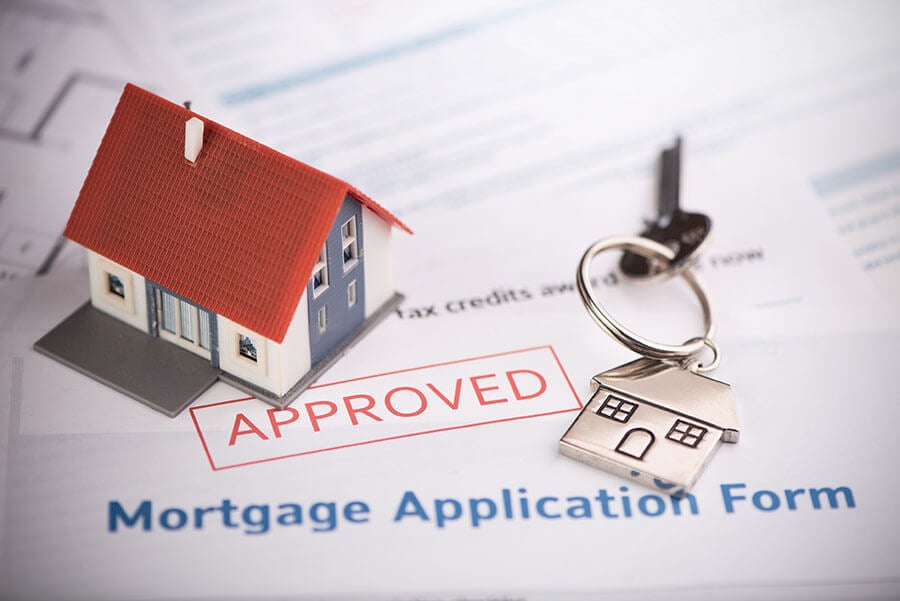Step-by-Step Procedure to Request Conventional Mortgage Loans
Step-by-Step Procedure to Request Conventional Mortgage Loans
Blog Article
The Essential Variables to Take Into Consideration When Deciding On Between Fixed-Rate and Variable-rate Mortgage Financings
When reviewing home loan choices, borrowers encounter a pivotal decision in between adjustable-rate and fixed-rate fundings, each offering prospective risks and distinctive benefits. Trick considerations such as rates of interest stability, predictability in regular monthly repayments, and the ramifications of possible price modifications can dramatically impact long-term financial health. Additionally, comprehending the expected duration of homeownership and the overall cost of borrowing can shape one's approach. As these aspects intertwine with private financial situations and risk resistance, the effects of this option may not be as straightforward as they seem. What nuances should be prioritized in this important decision-making procedure?
Rates Of Interest Stability
When picking a home loan, recognizing rates of interest stability is critical for notified decision-making. Rates of interest can significantly influence the general price of a home loan, and identifying the nature of these rates is crucial for customers. Fixed-rate home mortgages offer the benefit of regular regular monthly settlements over the life of the finance, securing customers from market variations. This stability allows homeowners to prepare their funds with greater certainty, as they will certainly not be influenced by rising rate of interest.
On the various other hand, adjustable-rate mortgages (ARMs) begin with lower initial rates that may alter occasionally based upon market problems. While this can cause reduced settlements originally, it also introduces unpredictability, as borrowers may face enhanced payments if rate of interest rates rise. For those considering an ARM, it is important to evaluate the possibility of rate changes, the capacity for payment increases, and the length of the initial fixed-rate duration.
Inevitably, the selection between fixed-rate and adjustable-rate mortgages pivots on specific danger tolerance and financial situations. Understanding interest price stability helps borrowers make educated choices that line up with their lasting monetary objectives.
Regular Monthly Repayment Predictability
While consumers commonly prioritize interest price stability, the predictability of regular monthly repayments is similarly crucial in the home loan option procedure (Conventional mortgage loans). Regular monthly payment predictability plays a critical duty in budgeting and monetary preparation, as it straight affects a home owner's capital and total financial wellness
Fixed-rate home loans offer a regular monthly settlement throughout the life of the finance, allowing consumers to expect and intend their costs properly. This security can be particularly helpful for first-time property buyers or those on a fixed income, as it removes the uncertainty related to changing repayments.
Conversely, variable-rate mortgages (ARMs) usually include lower preliminary settlements that can change gradually, leading to prospective irregularity in monthly obligations. While at first enticing, this unpredictability can complicate monetary preparation, specifically if customers do not represent future price changes.
Potential Rate Modifications
In the realm of variable-rate mortgages (ARMs), prospective rate adjustments represent a substantial factor that debtors should very carefully think about. Unlike fixed-rate home loans, where the rates of interest continues to be the same for the life of the loan, ARMs are characterized by rising and fall rate of interest that are connected to market indices. This irregularity can lead to substantial changes in monthly repayments, affecting the borrower's financial preparation and budgeting.
Usually, ARMs have an initial fixed-rate period during which the interest price is secure. Hereafter duration, nevertheless, the rate adjusts at predetermined periods-- generally each year. Consumers need to be mindful of the margin and index utilized to determine these adjustments, as they directly affect future rate of interest. Furthermore, ARMs often consist of caps that restrict exactly how much the interest price can increase at each modification and over the life of the finance, which can supply some level of defense versus drastic price walkings.
Recognizing these prospective adjustments is essential for debtors, as they directly impact lasting repayment commitments. For that reason, assessing individual economic circumstances and take the chance of tolerance is necessary when choosing whether an ARM straightens with one's financial goals.
Car Loan Term Factors To Consider
Lending term factors to consider play a crucial duty in the decision-making process for customers picking in between fixed-rate and adjustable-rate home loans. The size of the financing term considerably affects month-to-month settlements, rate of interest, and overall economic preparation. Fixed-rate home mortgages usually use terms of 15 to three decades, giving security in month-to-month payments and predictability in budgeting. This can be especially appealing for customers that plan to remain in the same home long-lasting and prefer the certainty of fixed payments throughout the life view publisher site of the lending.

Ultimately, borrowers should analyze their individual circumstances, monetary objectives, and market conditions when evaluating the implications of funding term selections within each mortgage kind.

General Expense of Borrowing
Fixed-rate home loans offer foreseeable regular monthly payments, as the rate of interest rate remains constant throughout the loan term. This predictability can lead to lower overall costs, especially in a stable or decreasing rate of interest price environment.
On the other hand, adjustable-rate home mortgages (ARMs) typically begin with lower initial prices, resulting in decreased in advance costs. Nevertheless, these rates can enhance after an initial period, causing possibly higher long-term expenses. Debtors need to think about the regularity and level of price adjustments, as well as the general loan period, to precisely examine the economic ramifications.
Moreover, the overall price of loaning like this encompasses not only rate of interest rates but additionally costs and various other associated prices, such as shutting costs and insurance policy (Conventional mortgage loans). As a result, when assessing home loan options, consumers need to carry out an extensive expense analysis over the life of the funding. By doing so, they can make an educated choice that lines up with their monetary objectives and run the risk of resistance
Final Thought
Rate of interest price stability and regular monthly repayment predictability are vital for efficient budgeting, while the capacity for price modifications in ARMs presents economic uncertainty. In addition, the expected period of homeownership and the general cost of loaning, consisting of rate of interest prices and linked costs, should line up with specific economic scenarios and run the risk of tolerance.
Trick factors to find this consider such as interest price security, predictability in month-to-month repayments, and the ramifications of prospective price changes can considerably influence long-lasting economic health. Interest prices can significantly affect the total expense of a home mortgage, and recognizing the nature of these rates is crucial for borrowers. Unlike fixed-rate home loans, where the passion price remains unchanged for the life of the lending, ARMs are defined by varying passion prices that are tied to market indices. Furthermore, ARMs usually include caps that restrict just how much the rate of interest price can raise at each modification and over the life of the financing, which can offer some degree of defense versus radical rate hikes.
Passion rate stability and month-to-month settlement predictability are critical for efficient budgeting, while the possibility for price modifications in ARMs presents economic unpredictability.
Report this page